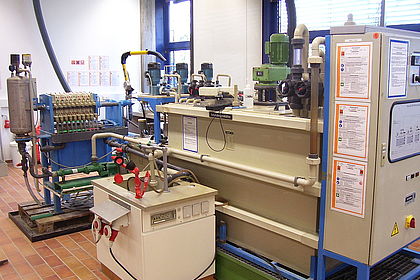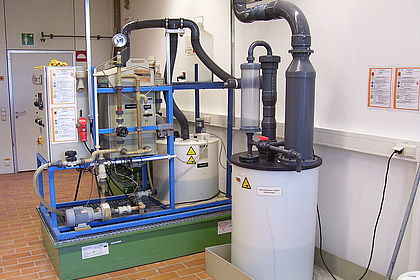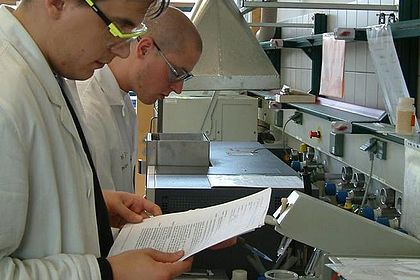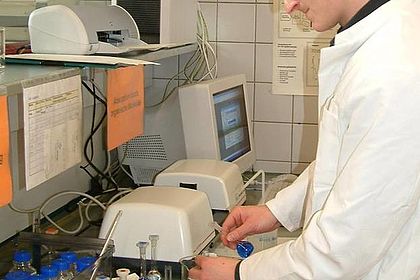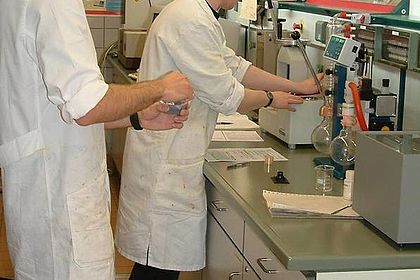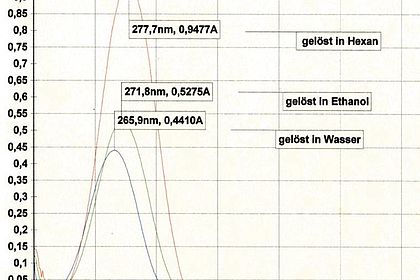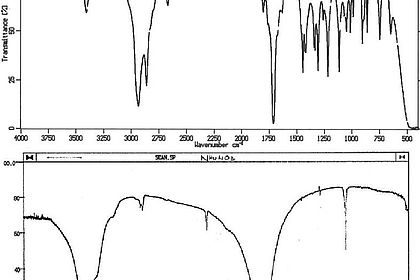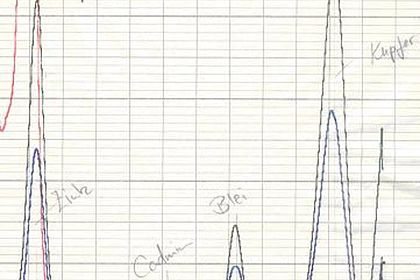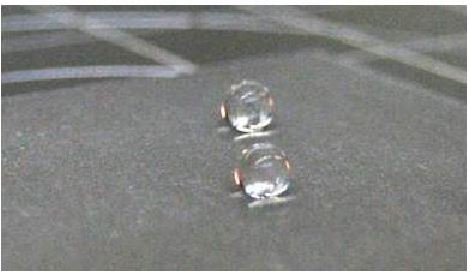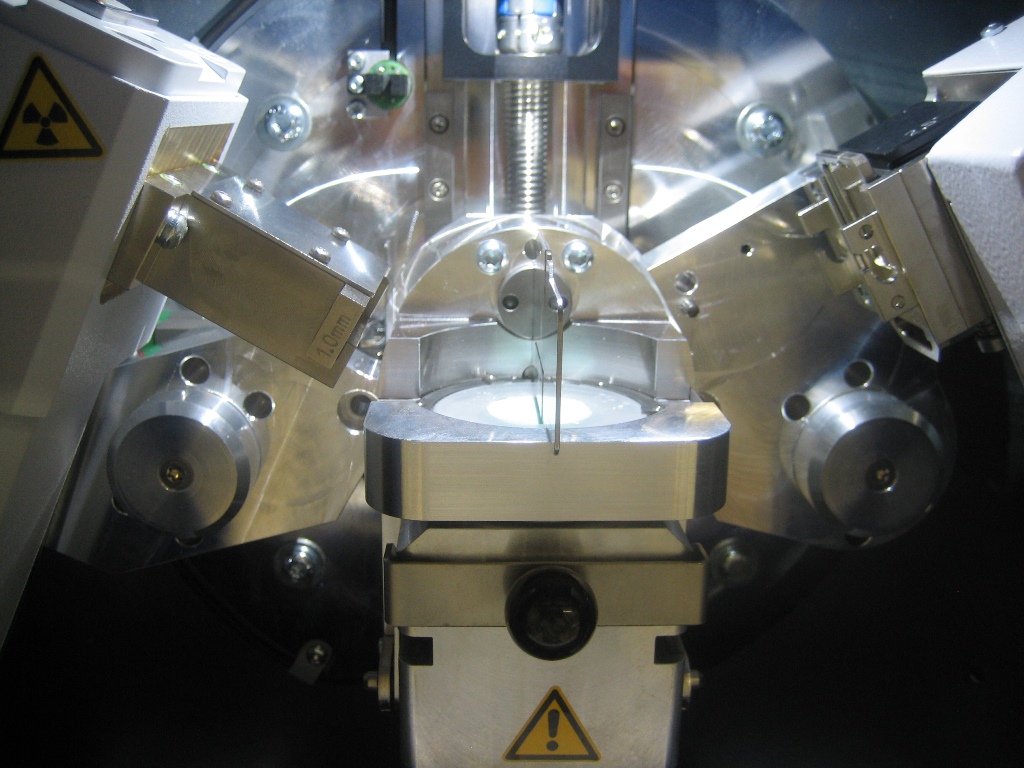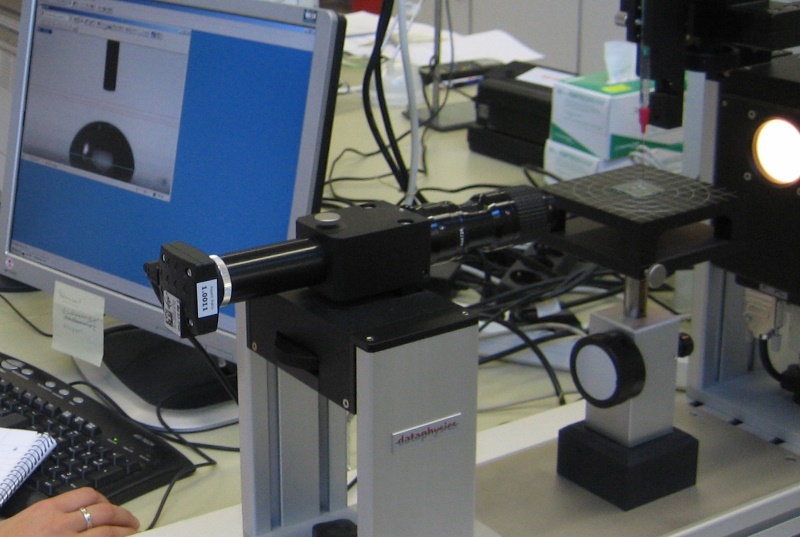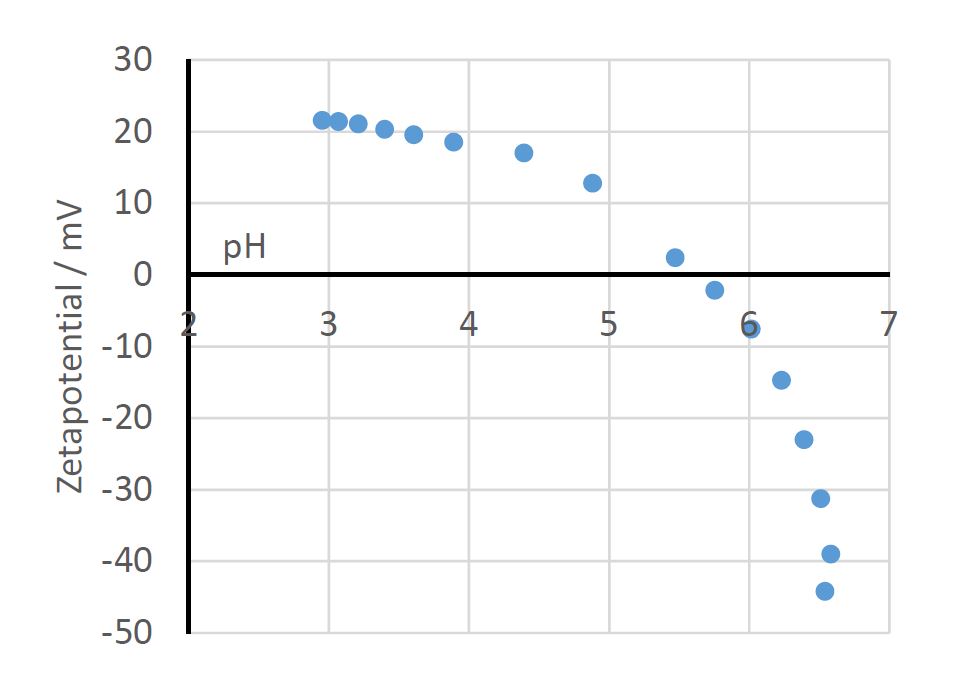The Environmental Engineering Laboratory has test benches on a laboratory and industrial scale which offer students the opportunity to use environmental engineering methods in practice to gain hands-on experience and also for project work and final projects. The laboratory plays a key role in the “Environmental Protection (M.Eng.)” cooperative degree programme, among other things. Apart from teaching, the laboratory is used for application-oriented research projects in collaboration with universities of applied sciences and industrial partners. The methods and concepts investigated focus on production-integrated environmental protection.
The laboratory is equipped with instruments which can chemically analyse liquid, gaseous and solid material flows. The analytical instruments comprise stationary laboratory instruments, mobile measurement systems, and measuring setups for field measurements.
- Sympatec HELOS /KR-Vario laser diffraction sensor with dry and wet dispersion unit to determine the particle size distribution of dusts, sprays, emulsions and suspensions
- Varian AA240 atomic absorption spectrometer for heavy metal determination in solutions
- Portable AAS Lumex RA-915M AAS for mobile mercury concentration determination in air and gases for field testing
- Lumex Pyro-915+/RA-915M for Hg determination in gaseous, liquid and solid samples
- ABB NDIR gas analyser for emission measurements (CO2, SO2, CO, NO)
- Laboratory UV/VIS photometer
- Continuous process monitoring (pH, T, redox, etc.)
- Mobile measuring instruments for pH, conductivity, etc.
- Portable photometer for field measurements
- Ball mill and sieve tower
Team: Daria Severyn, Vladimir Stack
Laboratory: S 12.009

